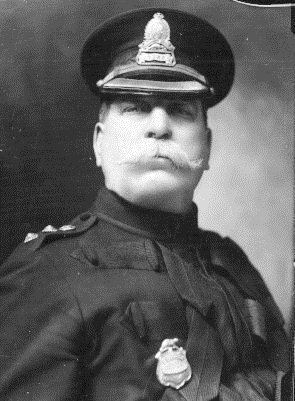Abbreviation SPVM Stations 33 Sworn members 4,600 (2009) | Formed March 15, 1843 Founded 15 March 1843 Annual budget 587 million CAD (2014) Unsworn members 1,600 (2009) | |
 | ||
Common name Montreal Police Service Legal personality Governmental: Government agency General nature Law enforcementCivilian agency Elected officer responsible Martin Coiteux, Ministre de la Sécurité publique Profiles | ||
The Service de police de la Ville de Montréal (SPVM) (French for Montreal Police Service) is the police force for the city of Montreal, Quebec, Canada and the neighboring communities in the Urban agglomeration of Montreal. With about 4,600 officers and 1,600 civilian staff, it is the second largest municipal police agency in Canada after the Toronto Police Service and second largest in the province behind the Sûreté du Québec.
Contents
- Montreal police arresting searching suspects in verdun downtown spvm
- History
- Chiefs of Police
- Organization
- Operations
- Fleet
- Equipment
- Criticism
- References
Montreal police arresting searching suspects in verdun downtown spvm
History
The Montreal Police Service was created on March 15, 1843. At that time, there were 51 police officers in Montreal. The first officers did not wear uniforms. In order to be recognizable as police officers by civilians, the first uniforms were created in 1848. In 1853, they won the right to carry firearms in the performance of their duties.
In the early twentieth century, the Montreal Police Service counted 467 constables, inspectors and managers. The force was subdivided, as squads of morality and local departments were created.
The size of the police force remained roughly the same from the beginning of the century until 1930, when it hired more staff in the context of the Wall Street Crash of 1929. During the Great Depression, tens of thousands of workers lost their jobs and there was an increase in crime. In the late 1930s, the Montreal Police Service had about 1,500 employees.
Following the progress of scientific analysis, a mobile laboratory was created in 1957. It evolved and changed in the 1980s to become the technical section.
The Museum of the Montreal Police (French: Musée de la police de Montréal) was established in 1992 to preserve the history of the Montreal Police Service.
Chiefs of Police
The following is a list of the Chiefs and Directors of the Service de police de la Ville de Montréal.
Organization
The force is led by Director of Police Philippe Pichet.
The rank structure and current strength of the force is:
Some of the police functions carried out by the service, include:
SPVM also has about 1,000 civilian employees, as well as about 200 police cadets.
Operations
The SPVM covers an area of about 496 square kilometres and 1,958,000 residents of the island of Montreal.
There are 33 police stations that operate within four geographical regions: East, West, North and South.
Other units of the SPVM, include:
Fleet
Equipment
The standard sidearm of the Montreal Police is the Glock 19. Remington 870 shotguns and FN P90 sub-machine guns are also stocked by the SPVM and its SWAT armory, but these long arms are rarely used.
Criticism
On 3 November 2005, the United Nations Human Rights Committee advised the Canadian government to allow an enquiry on the SPVM about its mass arrests tactic during political demonstrations. The tactic is a rapid encirclement of as many protesters as possible regardless of how they may have conducted themselves during the demonstration, and is argued to be a violation of their fundamental rights. According to Francis Dupuis-Déri, a political science professor at Université du Québec à Montréal, police officers employ this tactic because of a "deviance" radical political demonstrators pose to media, politicians and police officers themselves. The SPVM was once again criticized in the aftermath of the August 10, 2008 riots, which started due to the shooting death of 18-year-old immigrant Fredy Alberto Villanueva by an officer who alleged that Villanueva was attacking him and his partner while they were arresting Villanueva's older brother. He argued that he was trying to save his partner and himself by firing his Walther P99 service gun on 18-year-old Fredy Villanueva.
In 2012, the SPVM also came under criticism regarding their handling of the 2012 Quebec student protests.
Former Montreal police officer Stéfanie Trudeau was given a 12-month suspended sentence and ordered to do 60 hours of community service for assaulting a man in October 2012. Trudeau, known as "Officer 728" for her badge number, was found guilty of assault in February 2016 for using excessive force when arresting Serge Lavoie outside his home. Quebec Court Judge Daniel Bédard said Trudeau was the instigator in the illegal arrest, and the situation escalated because of her conduct. He noted that Lavoie did not pose a threat to Trudeau and her patrol partner.
In June 2016, the Quebec Minister of Public Security introduced an independent agency, the "Bureau des enquêtes indépendantes (BEI)", to be responsible for investigating "shootings, serious injuries and deaths stemming from police interventions". The selection of investigators was immediately and widely criticized for being composed of former members law enforcement. Eleven out of the eighteen members are former police officers, in addition to being "nearly 100 percent white and composed almost entirely of men". Furthermore, the structure of the agency itself was criticized for lacking independent powers, since the BEI "acts only at the request of the Minister of Public Security".
